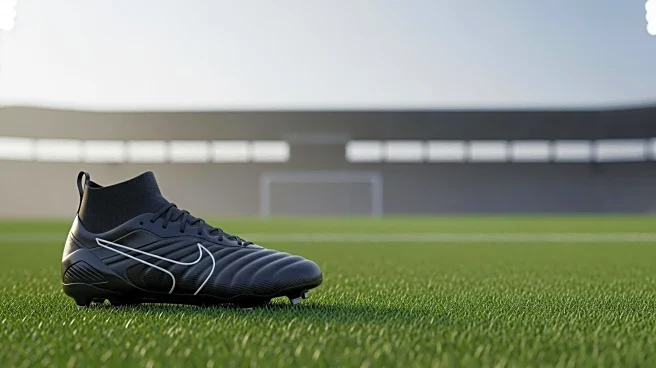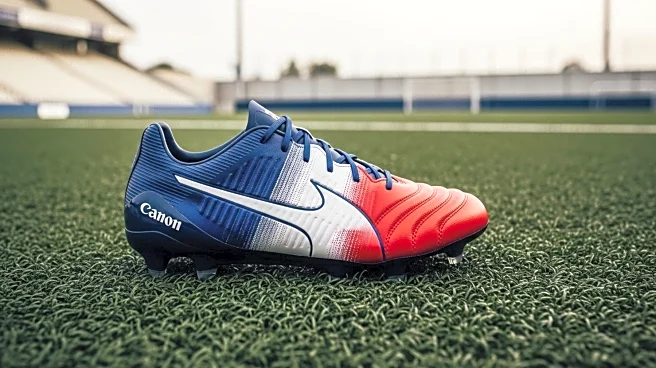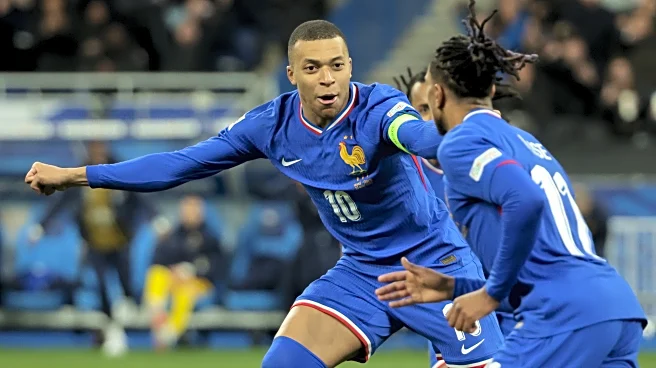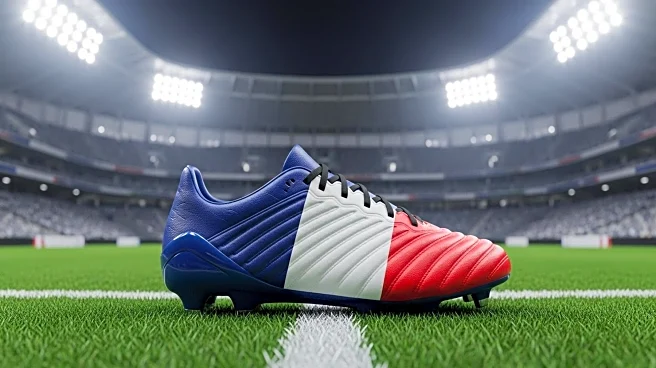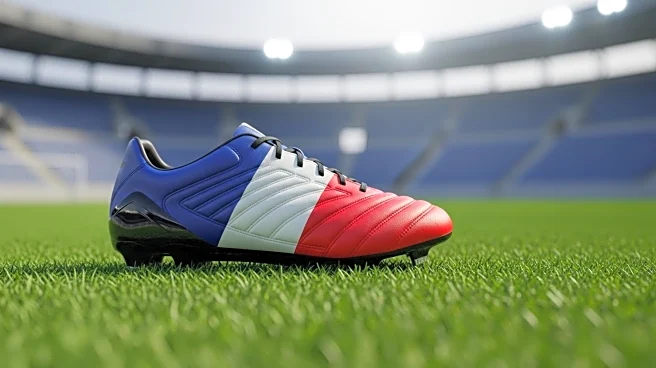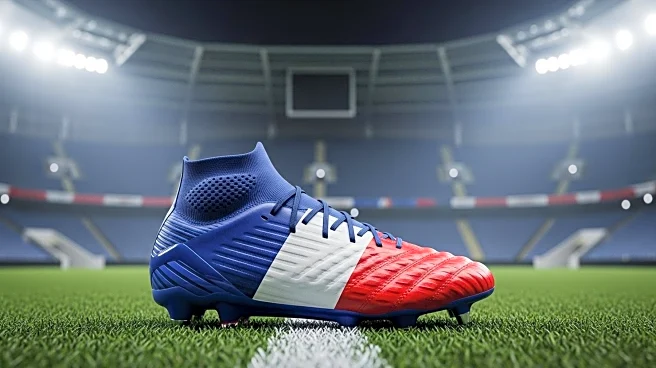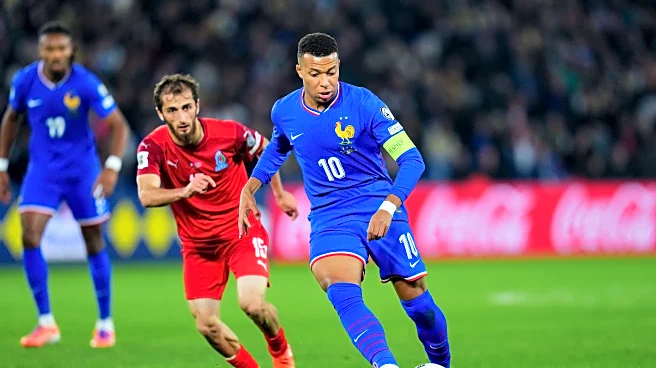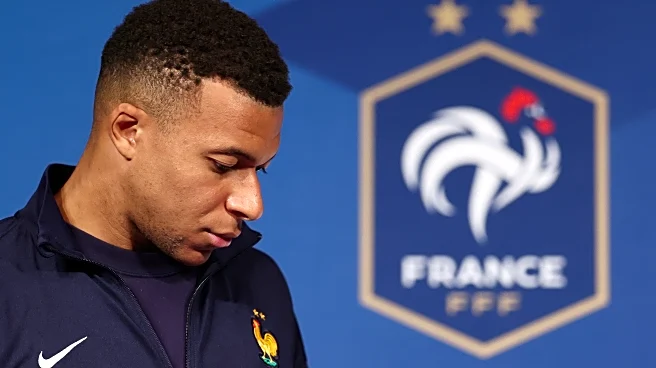What is the story about?
What's Happening?
France captain Kylian Mbappé will not participate in the upcoming World Cup qualifier against Iceland due to a right ankle injury, as confirmed by France's football federation (FFF). The Real Madrid star sustained the injury during France's recent 3-0 victory over Azerbaijan, where he was forced to leave the field in the 83rd minute. This injury follows a previous incident where Mbappé hurt the same ankle while playing against Villarreal. The national coach has decided not to replace Mbappé, allowing him to return to his club, Real Madrid. France, who were runners-up in the 2022 World Cup, have started their qualification campaign for the 2026 edition strongly, winning all three of their matches in Group D.
Why It's Important?
Mbappé's absence is significant for both the French national team and Real Madrid. As a key player, his injury could impact France's performance in the World Cup qualifiers, although they have been successful so far. For Real Madrid, his return to the club for recovery is crucial, as they rely heavily on his contributions on the field. The decision not to replace him in the national squad suggests confidence in the team's depth and ability to maintain their winning streak without their star forward. This situation highlights the challenges teams face in managing player injuries during critical qualification periods.
What's Next?
France will proceed with their World Cup qualifying campaign without Mbappé, focusing on maintaining their perfect record in Group D. Real Madrid will likely prioritize his recovery to ensure he returns to full fitness for upcoming club matches. The French national team may need to adjust their strategies to compensate for his absence, potentially giving other players the opportunity to step up. Monitoring Mbappé's recovery will be essential for both his club and country, as his performance is pivotal to their success in future competitions.
Beyond the Headlines
Mbappé's injury raises broader concerns about player health and the demands of international and club football schedules. The frequency of injuries among top players can lead to discussions about the need for better management of player workload and recovery protocols. This situation may prompt football federations and clubs to reassess their approaches to player fitness and injury prevention, ensuring athletes can perform at their best without compromising their long-term health.
AI Generated Content
Do you find this article useful?


